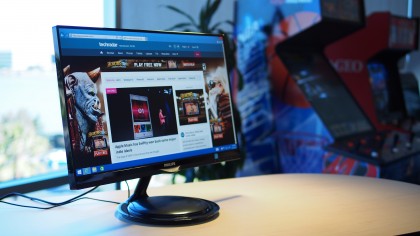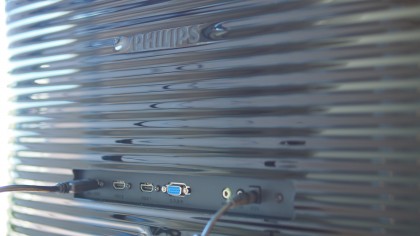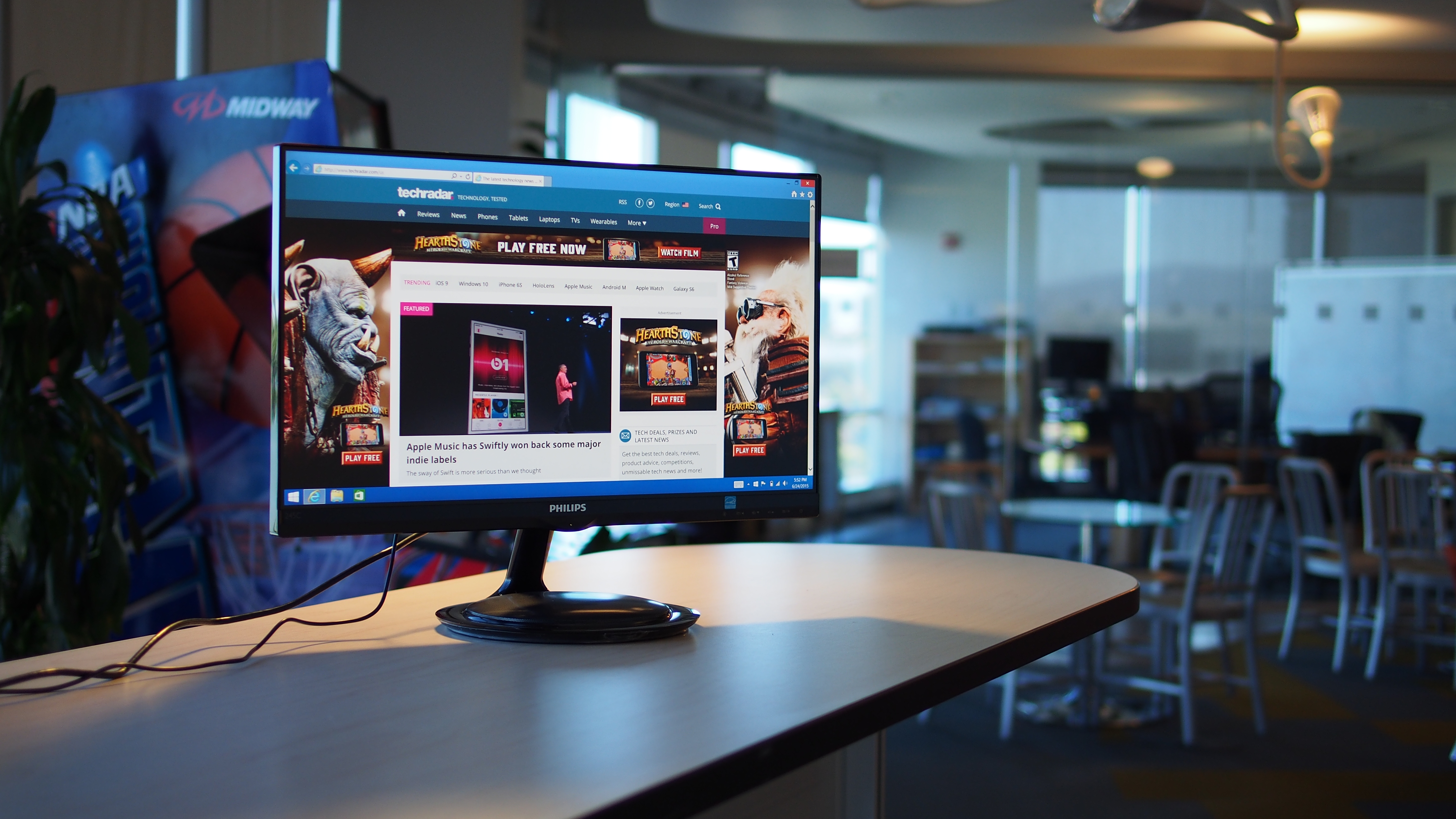TechRadar Verdict
Philips differentiates the stylish Moda 2 by integrating good quality speakers with a great display, but users should probably spend their money on a higher resolution screen or on a monitor that adds touch.
Pros
- +
Loud speakers
- +
Great color accuracy
- +
MHL/Bluetooth connectivity for phones
Cons
- -
Matte finish is just a film (not a sprayed-on treatment)
- -
Menus can be frustrating
- -
Speakers lack fidelity
Why you can trust TechRadar
There are only so many ways to differentiate your product in the monitor space, and rather than compete on panel resolution, screen size or price, Philips opted to go a unique route and pair better audio quality to its display. The Moda 2 ($220, £140, AU$285), also known as the 245C5, integrates a Bluetooth speaker into the base of the monitor stand, giving users an upgraded display experience with a 24-inch screen and an enhanced sound experience for multimedia consumption.
In the compact monitor space, the Moda 2 competes against displays in the 21- to 24-inch range. In this space, the 21.5-inch Acer UT220HQL ($199, £125, AU$255) differentiates itself by adding a touchscreen panel, the BenQ EW2440 ($220, £140, AU$285) brings a stylish design and integrates a smartphone dock to highlight its MHL connectivity and the 21.5-inch Samsung SD300 series ($149, £93, AU$191) offers a great panel at a significantly more affordable price.
At the suggested retail cost of $300, users can even find higher resolution panels, such as QHD and UHD 4K screens. Dell's 28-inch P2815Q display bumps up the resolution to 4K for $299 (£188, AU$386).
Design
Considering that most PC users buy a good display and fail to purchase good speakers for their computer, the entertainment experience can be hampered by poor sound quality. Philips chose to target these users with its C245C5 Moda 2 display by bundling better quality speakers with a great monitor design.

Cloaked in glossy black plastic, the Philips C245C5 looks like a product with a premium price tag. If Philips had used aluminum instead of plastic for the construction, the Moda 2 could be mistaken for a Bang & Olufsen Beovision product, given its unique, minimalist design.
One of the highlights of the Philips 245C5 is the base of the display, with a circular mesh pillow that houses the dual 7W speakers. The design is both functional and aesthetically pleasing, which should add to the Moda 2's desk appeal.
The Moda 2 measures 21.3 x 1.5 x 13.1 inches (54.1 x 3.8 x 33.3cm) and weighs 9.94 pounds (4.5kg), making it sturdy enough on a desk, but light enough for business users to carry to trade show booths for use as a digital display.
Sign up to the TechRadar Pro newsletter to get all the top news, opinion, features and guidance your business needs to succeed!

The roomy 24-inch IPS screen on the front spans to the edges of the display with a bezel-less look. The monitor floats above the circular, upward-firing speakers on the bottom thanks to an angular stand.
On the rear of the panel, Philips employs a textured wavy pattern to the glossy black finish, which keeps things interesting. I personally don't care for the pattern. The glossy black material attracts fingerprint and dust easily, which may be a problem if you're using the monitor in an open front office setting.
The back also houses a thin cut out where the connectivity ports are located. The Moda 2 accommodates three HDMI, single VGA and audio input and output ports. Philips also included a small clip-on cable management ring in the box, which plugs into a small hole in the lower portion of the rear of the stand to keep wire clutter to a minimum.

Build quality for the display is solid, except for a small lip on the bottom center of the screen. Presumably, this lip is to aid users when adjusting the tilt angle of the display, but when pressure is applied to the lip, it feels like the bottom plastic strip of the display is about to come undone.
